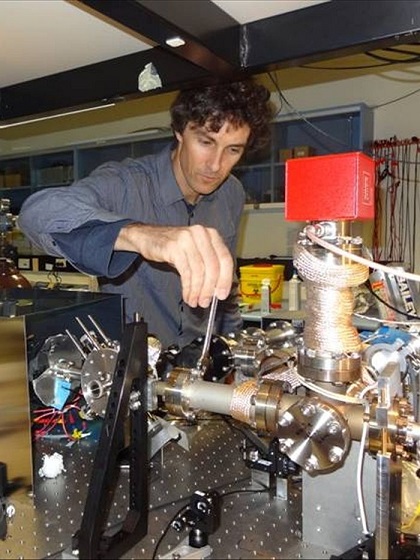Laser sights set on finite device

Researchers led by Associate Professor John McFerran at the University of Western Australia are working on a project to create an atomic timing device based on the transition of atoms in the rare earth element – ytterbium.
Professor McFerran says: “Rather than clocks, I like to think of them as humankind's ultimate accuracy machines.”
Accuracy is the name of the game in atomic measuring devices. The team will use ytterbium’s ability to operate at much higher optical frequencies to enable time to be measured and divided into miniscule portions – up to a thousand times smaller (and therefore more accurate) than previous designs.
“To build it, we need a collection of lasers, optics, electronics, stainless steel and an ultra high vacuum system to isolate the atoms,” says McFerran.
“Each laser system is almost a PhD or master’s thesis in itself.”
One laser system is used to calm and cool the ytterbium atoms, while trapping them in a magnetic lattice. The ytterbium will then be hit with an ultra-pure highly stable yellow laser which causes electrons in the atom to transition to a higher energy state.
In its yellow laser-induced state of excitement, the ytterbium is prompted to give off a regular, rapid, but almost infinitesimally small fluctuation – the basis for its use as a measurement of time.
The clock is one of several being produced to be included in an array for the Atomic Clock Ensemble in Space (ACES) project, to take place on the International Space Station.
They will be based on different atomic ingredients and will have counterparts back on earth, which after three years will be compared to see if the law of the fine structure constant is the same throughout the universe.
“Astronomical observations suggest that this has changed over the eons, the billions of years of the universe,” says McFerran.
“It may be different in different directions, and so the atomic clock community is on the hunt to see if we can detect such changes.”
The improved clock design will also contribute in the same way as other super-precise instruments – allowing greater accuracy for GPS systems, among other duties.








 Print
Print